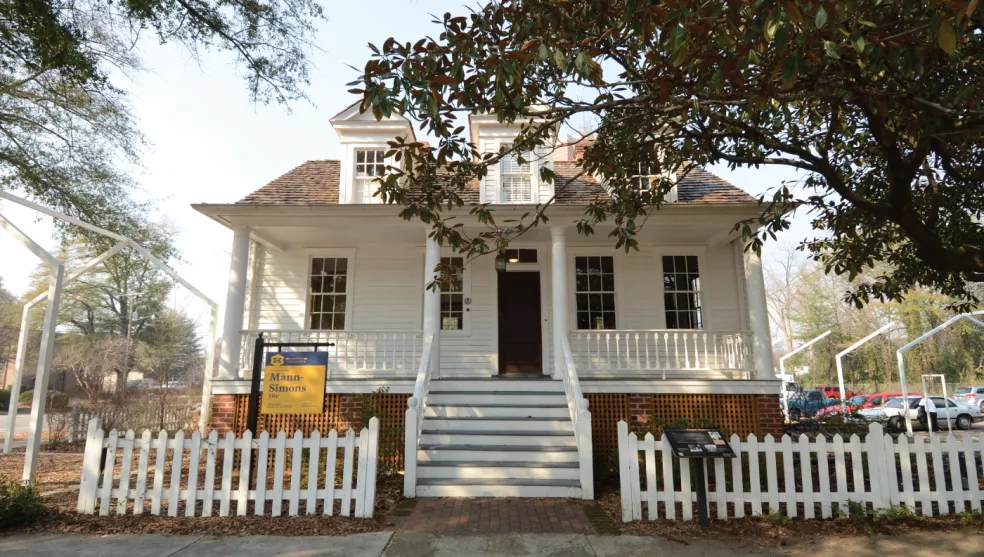Fun for Home: Pottery Refit Activity
Thursday, April 23rd 2020

The Mann-Simons site was home to the same African American family for over 130 years, and traces their story from enslavement through urban renewal. A multi-year archaeological excavation of the site was completed in February 2012, uncovering 60,000 artifacts that offered important clues and insights into the family’s history.
The information uncovered is reflected in the collections on display inside the home, and in the outdoor museum which features five “ghost structures”. The structures represent frames of the buildings that once stood on the site, including a former lunch counter, grocery store, outhouse and residences.
The Mann-Simons site illustrates how archeologists “piece together” clues from the past to tell the story of the family. Children can experience how this archaeological process works with our Pottery Refit activity! In this activity, children will make and piece together their own artifact, just as archaeologists would after returning to the lab from an excavation.
Materials needed for this activity

- A terra-cotta pot (if you don’t have a pot, you can substitute this with an old cup or coffee mug)
- Markers or paint
- A zip-lock bag
- Glue or modge-podge
- A paint brush
- Paper towels or a plate
You're going to start by decorating the outside of your pot with markers or paint to transform it into an artifact. Make sure the decoration goes all around the pot, this will help you once you “age” it. Archaeologists usually refer to this decoration as “surface treatment” - this can also include texturing, paint, smudging, or other markings on the outside of the artifact.

Next you’ll “age” your artifact by breaking it. You don’t want anyone to get hurt during the aging process, so put your artifact in a zip-lock bag before you drop it to break it. The more your artifact breaks, the “older” it is!

Now that you’ve aged your artifact, you’ll work to piece it together like a puzzle, just like an archaeologist would when they bring the artifacts they uncovered back to the lab to figure out what they are.
You can use glue or modge podge to keep the pieces together so that you’re able to reconstruct your artifact. As you match pieces, paint the edges with glue or modge podge, and hold them together for a few seconds so that they stick. We recommend placing paper towels or a paper plate under your artifact as you work to limit the mess.

If you're working with a younger child who isn’t ready to handle sharp objects or small pieces, we recommend using a paper plate or cup. Instead of breaking the plate after it’s been decorated, they can ask a parent or guardian to help “age” their artifact by tearing it into large, easy to handle pieces.

Once you’ve pieced your artifact together, make sure you share a picture of your hard work and tag Historic Columbia!
How to Help
Historic Columbia
Historic Columbia is feeling a significant impact as the closure of our house museums, cancellation of events and programs, and discontinuation of the rental program has resulted in the elimination of critical operating income. To put it simply, we need your help.